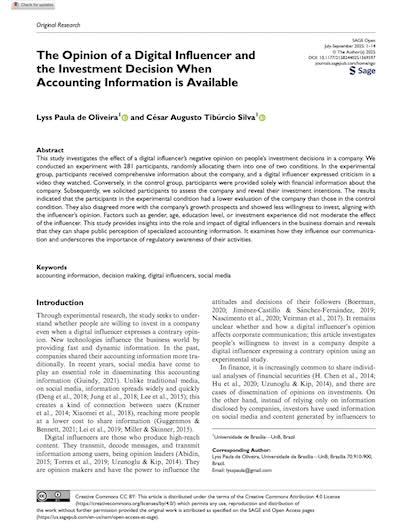Today's article comes from the Sage Open journal. The authors are de Oliveira et al., from the University of Braslia, in Brazil. In this study, the authors devised an experiment to test whether an influencer could actually sway peoples' opinions or not.
DOI: 10.1177/21582440251369597


You must be an active Journal Club member to access this content. If you're already a member, click the blue button to login. If you're not a member yet, click the sign-up button to get started.
Login to My Account
Sign Up